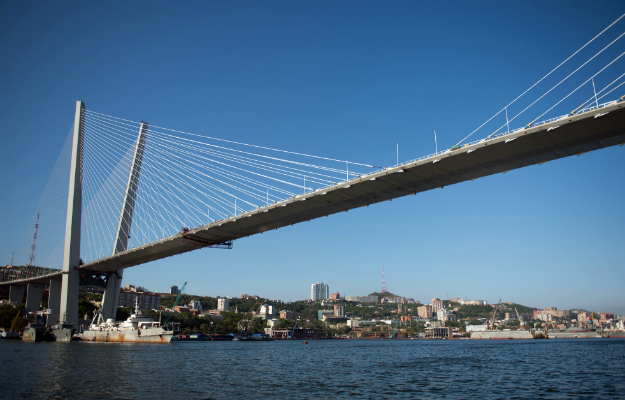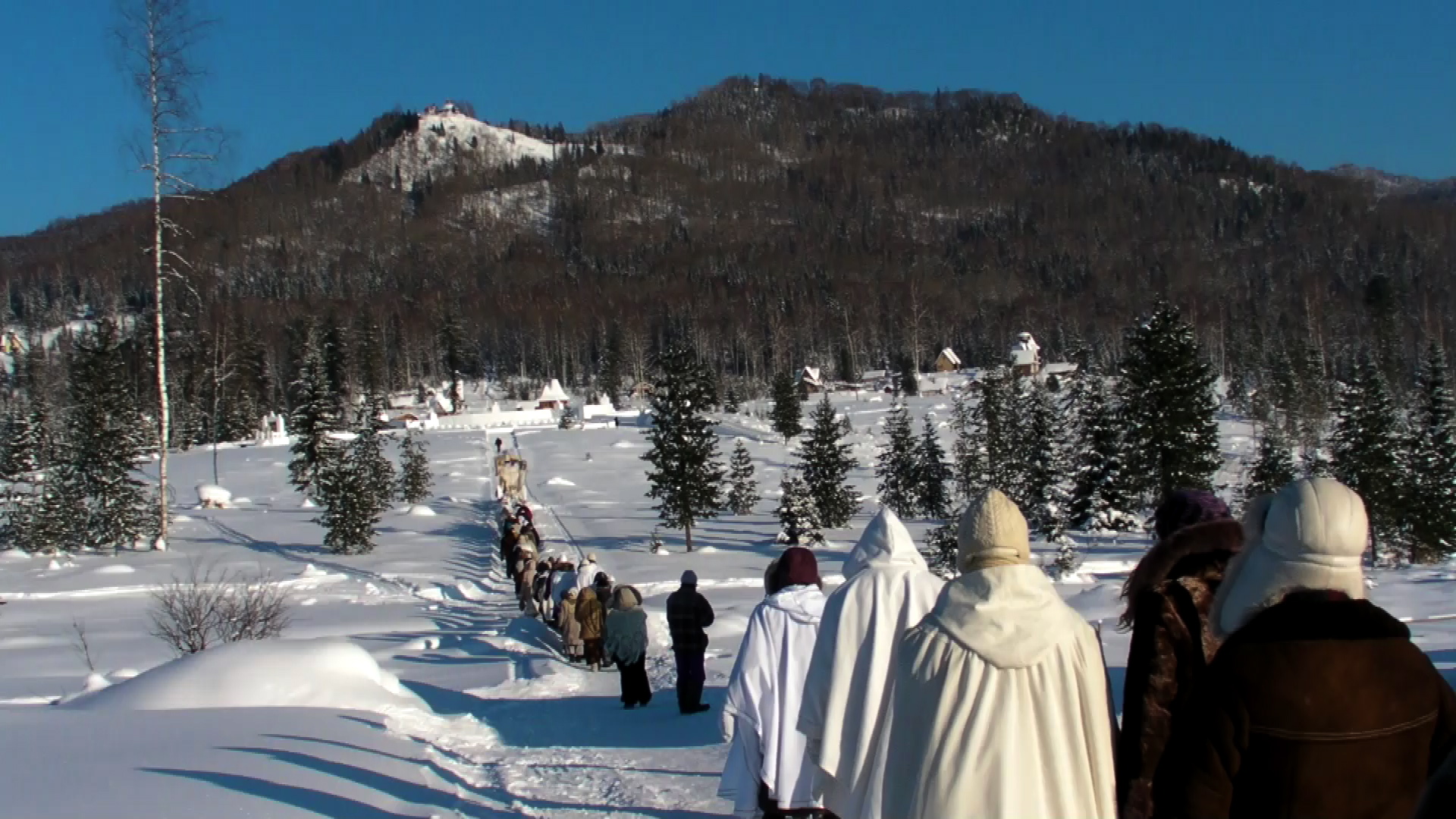
Tears ran down Nadezhda Voronstova's face as she recounted her story with a sense of bitterness and hopelessness. The trouble started last month when two men who introduced themselves as representatives of the Ministry of Regional Development broke the news that Moscow had decided to demolish her house along with her entire village on Russky Island, just off the coast of the Russian city of Vladivostok the site of this week's Asia-Pacific Economic Cooperation (APEC) summit.
The 52-year-old Vorontsova intended to spend the rest of her peaceful life with her daughter and grandson in their house on mostly uninhabited island in the Sea of Japan, 4,000 miles east of Moscow. She and her fellow homeowners wrote a letter to Putin and Prime Minister Dmitry Medvedev asking for protection -- to no avail. Looking in the direction of a luxurious new convention center, just a couple kilometers away from her, where Vladimir Putin and the 21 other APEC leaders will meet, Vorontsova repeated between her sobs: "I will burn myself together with this house and maybe then Putin will realize what they do to our little human lives!"
She's particularly vexed by the fact that her village is slated to be razed to the ground after the summit takes place. Reportedly, the plan is to build a tourist resort and several private villas on the site.
Alexaner Ozhegov, a spokesman with the ministry of regional development in Vladivostok, dismissed their pleas. "Oh, what they say is nothing but a soap opera. We have a written decision regarding that village signed by a minister," he said in an interview.
Vladivostok is located near Russia's borders with China and North Korea and with easy sea access to Japan. After the city's founding in 1860, it took Russians about a decade to expel Chinese and Manchus from the territory they populated for decades. Vladivosotok, known for its beautiful sea views, is home to the Russian Pacific Fleet and is the country's main Pacific port. In Soviet times, the city was closed to foreign visitors due to its strategic importance. Today, hundreds of foreign tourists arrive every week on giant cruise ships from Australia and North America. Given the difficulties of governing a city so far from Moscow, there's been serious consideration in recent years about whether it would be better for Vladivostok, and the entire Primorye region, to be handed to China on some sort of a long-term lease.
All of which is to say that to understand what happened to Vorontsova's village, it's necessary to understand the larger state of affairs in eastern Russia. Since 1992, the population of Russia's easternmost region, Primorye, has shrunk by 352,000 people to less than two million. Many of the departed are disillusioned youth who flee to Moscow, St. Petersburg or abroad after graduating high school. A recent poll showed 40 percent of the region's people are looking to pack their luggage and leave. In order to stop the brain drain, Russian authorities decided to build a better-looking façade on the Asian end of the country. In the past five years, Moscow has spent over $20 billion worth of new roads, bridges and buildings in the province in the lead-up to the summit.
The campus for the APEC summit is the crown jewel of this effort to beautify the struggling region. Despite complications during construction including a bridge fire and a road collapse during a severe rainstorm, the new, spectacular campus was completed on time to host the summit for a week on the island. Putin intends to use the summit to position Russia as a Pacific power and is looking to deals to provide natural gas to China and Russia. The government is promising upgrades to airports, seaports, and transportation links throughout Russia's vast east. But the changes so far have been mostly cosmetic, and as usual, for projects of this size, some powerful interests have managed to enrich themselves in the process.
"The scenario had been already well rehearsed at the Olympic construction in Sochi: Moscow decided who would get kick-backs from federal finance; to get rid of villages on the island, Moscow offered money; several sub-contract companies in Vladivostok went bankrupt during APEC construction, as Moscow did not pay the promised fees," said Mikhail Tersky, an academic and director of a local policy think tank. The APEC 2012 construction budget turned out to be five times larger than originally announced by the Kremlin five years ago. "At least half of Moscow's money was stolen," Tersky concluded.
It's not as if there's a shortage of problems to throw money at in Vladivostok. The city's population of 592,000 suffers crippling traffic jams, there's no public transportation after 9 p.m, there's a shortage of affordable housing -- even the local kindergartens require bribes before your child can enroll.
In light of these problems, many find it baffling that Moscow elected to pour money into building the world's longest cable suspension bridge to connect the city to an island with fewer than 5,000 people. The grandiose bridge will be mainly used by a few thousand students at Far Eastern Federal University, who will move to the campus when APEC is over. "It would be difficult to think of a more absurd and expensive project; of taking such giant investments away from already isolated Primorye region on to even more isolated island," said former Kremlin's administration advisor for Far East project, Yuri Krupnov, who was a critic of the project.
The Kremlin may have dreams of turning Vladivostok into Russia's San Francisco -- complete with an iconic bridge -- but it's still not clear what economic role the region can play. Before 2008, Far East businessmen benefitted from importing nearly 500,000 second-hand Japanese cars a year and sold them in throughout Russia. In fact, the flow of cheap and good quality cars threatened to devaluate the entire domestic automobile industry. To put an end to the practice, Moscow authorities increased the import tax for the Far East from 5 percent to nearly 30 percent, leaving thousands out of work. Thousands of angry car dealers flooded the streets and protesters blocked Primorye's highways and railways. It did not take Russian parliament long to accuse Vladivostok of plotting an "Orange Revolution."
Moscow responded to the disturbance by sending in police special forces, who "violently beat and detained dozens, to make a clear point that nobody in Moscow cares about what people in Far East think of Moscow's state policy," opposition leader Alexander Samsonov recalled. Both he and his cousin were beaten and detained several times for organizing street protests in Vladivostok. The regional economy has never recovered from the shock of 2008.
This weekend, sitting down with his guests and enjoying spectacular view over picturesque Ajaks Bay, Putin may not be aware that just a mile away, inside the walls of buildings freshly painted in happy colors for the summit, the ceilings of private apartments are caving in. Even the program director of the APEC summit admitted in an interview with me that the Russky Island facility is "a pure Potemkin Village," referring to the fake facades built to impress Empress Catherine II on her way to Crimea in 1787.
The glitz of the summit cannot mask the slow death of this city, but for now, Vladivostok residents are doing their best to enjoy their moment in the spotlight. With world leaders visiting this week, the main streets were cleaned up and groomed, music, circus and laser shows were held on the city's embankment.
"With all massive corruption scams around it, without APEC, Vladivostok might have lost five times more people this year," Tersky said, looking at the bright side.



